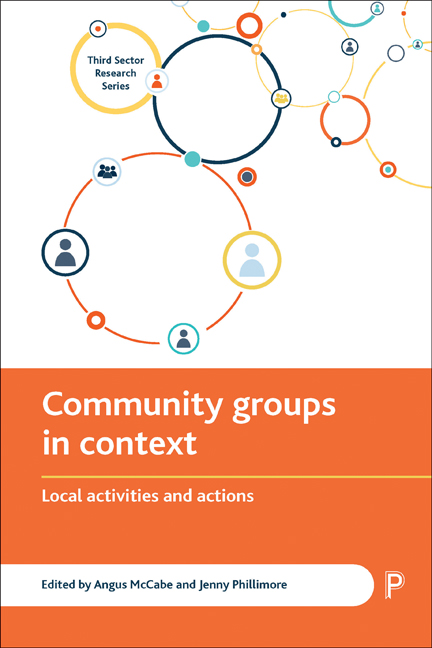Book contents
- Frontmatter
- Contents
- List of tables and figures
- Foreword
- Series editor’s foreword
- Acknowledgements
- Notes on contributors
- Introduction Why get below the radar? The importance of understanding community groups and activities
- Part One Scoping and mapping community actions and activities
- Part Two Community groups and activities in context
- Part Three Under-explored radars
- Part Four Thinking about voice, learning and emotion below the radar
- Index
Introduction Why get below the radar? The importance of understanding community groups and activities
Published online by Cambridge University Press: 05 April 2022
- Frontmatter
- Contents
- List of tables and figures
- Foreword
- Series editor’s foreword
- Acknowledgements
- Notes on contributors
- Introduction Why get below the radar? The importance of understanding community groups and activities
- Part One Scoping and mapping community actions and activities
- Part Two Community groups and activities in context
- Part Three Under-explored radars
- Part Four Thinking about voice, learning and emotion below the radar
- Index
Summary
There is a growing body of literature on the voluntary, or third, sector (Milbourne, 2013). Equally, there is a long tradition of research into communities, stretching back in the UK to the series of reports produced by the Community Development Projects in the UK in the early to mid-1970s (Craig et al, 2008).
However, the former tends focus on formal voluntary organisations: those constituted and regulated by the Charity Commission or the Regulator of Community Interest Companies or third sector organisations involved in the delivery of public services (Rees and Mullins, 2016). Even in studies on smaller groups in the sector, the focus tends to be on organisations with incomes of between £25,000 and £1 million – namely smaller charities (Crees et al, 2015; Hunter et al, 2016) – rather than community groups without paid staff, with little, or no, income and not involved in the delivery of public services.
In the case of the latter, much of the community development literature has a theoretical focus (Somerville, 2011) or relates to professional interventions with communities (Taylor, 2015). In short, relatively little attention has been paid to informal, or semi-formal, community groups and activities. This situation is neatly summarised by Toepler (2003) as follows:
Perhaps one of the few remaining big mysteries in non-profit sector research is the question of what we are missing by excluding those organisations from empirical investigations that are not easily captured in standard data sources. (p 236)
This assertion remains largely true 15 years after it was written.
Yet, as the following chapters in this book argue, it is important to understand the role of the informal in what is now termed civil society. First, although the statistics are difficult to verify, community-based or below the radar groups are the largest part of the sector. Across time, the National Council for Voluntary Organisations’ almanacs and profiles of the sector (Jas et al, 2002; Kane et al, 2015) estimate the number of such groups at between 600,000 and 900,000. This compares with just over 165,000 registered charities as of March 2016. Again, much of the literature on the impact of austerity measures and funding cuts in the UK has focused on this cohort of organisations to the detriment of understanding the effects on small-scale community activity (Davidson and Packham, 2012).
- Type
- Chapter
- Information
- Community Groups in ContextLocal Activities and Actions, pp. 1 - 4Publisher: Bristol University PressPrint publication year: 2017
- 1
- Cited by

